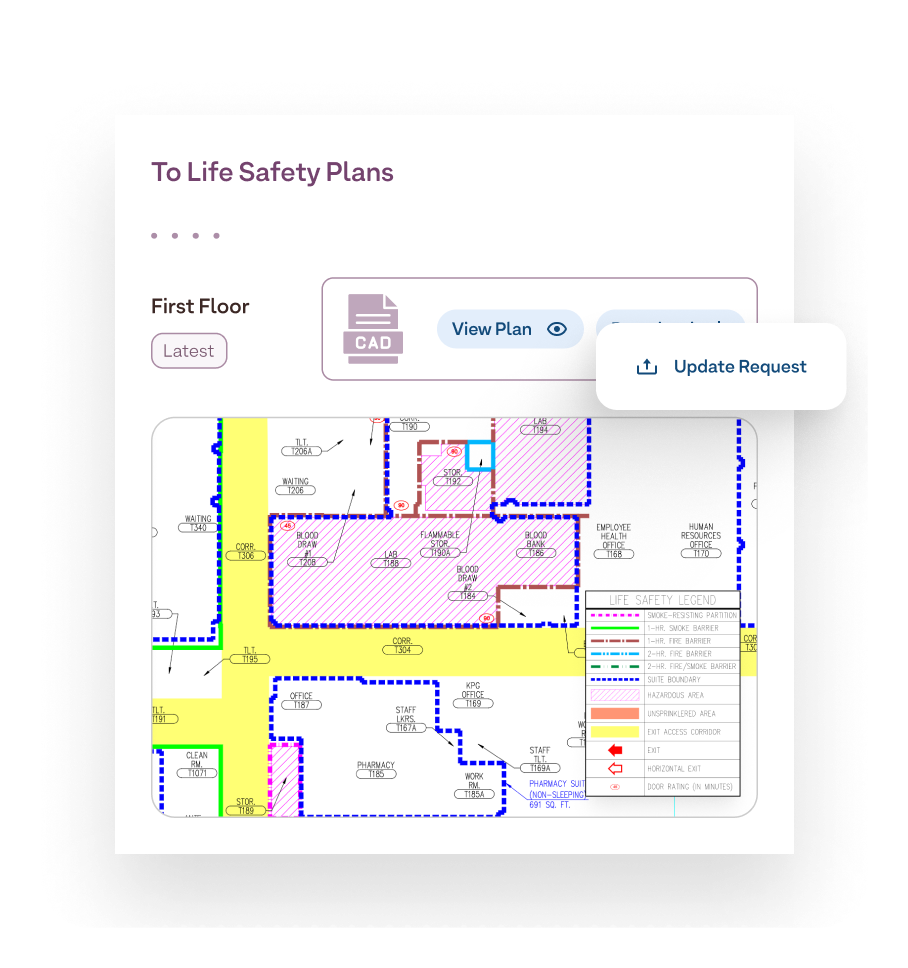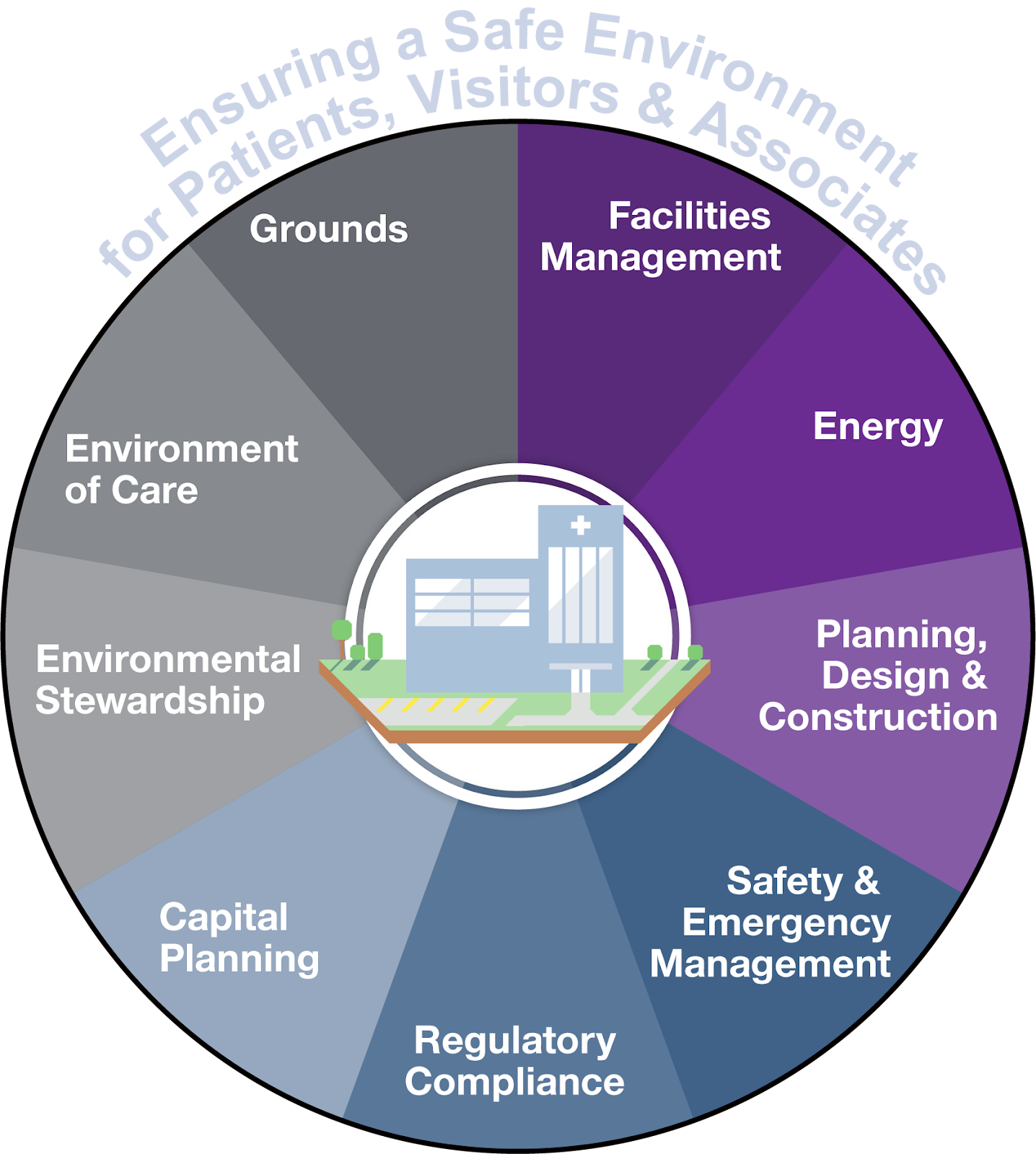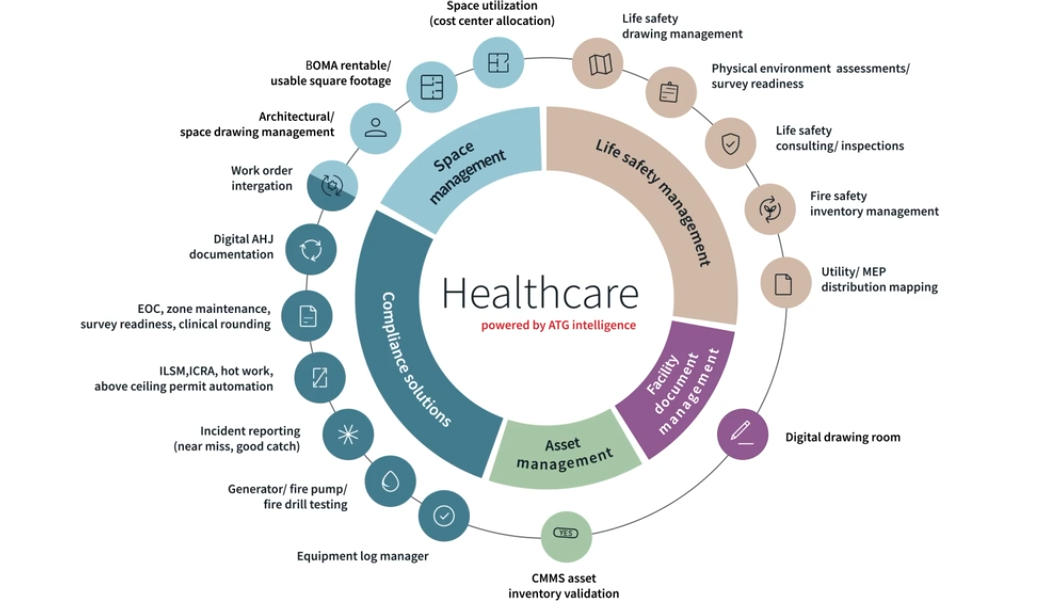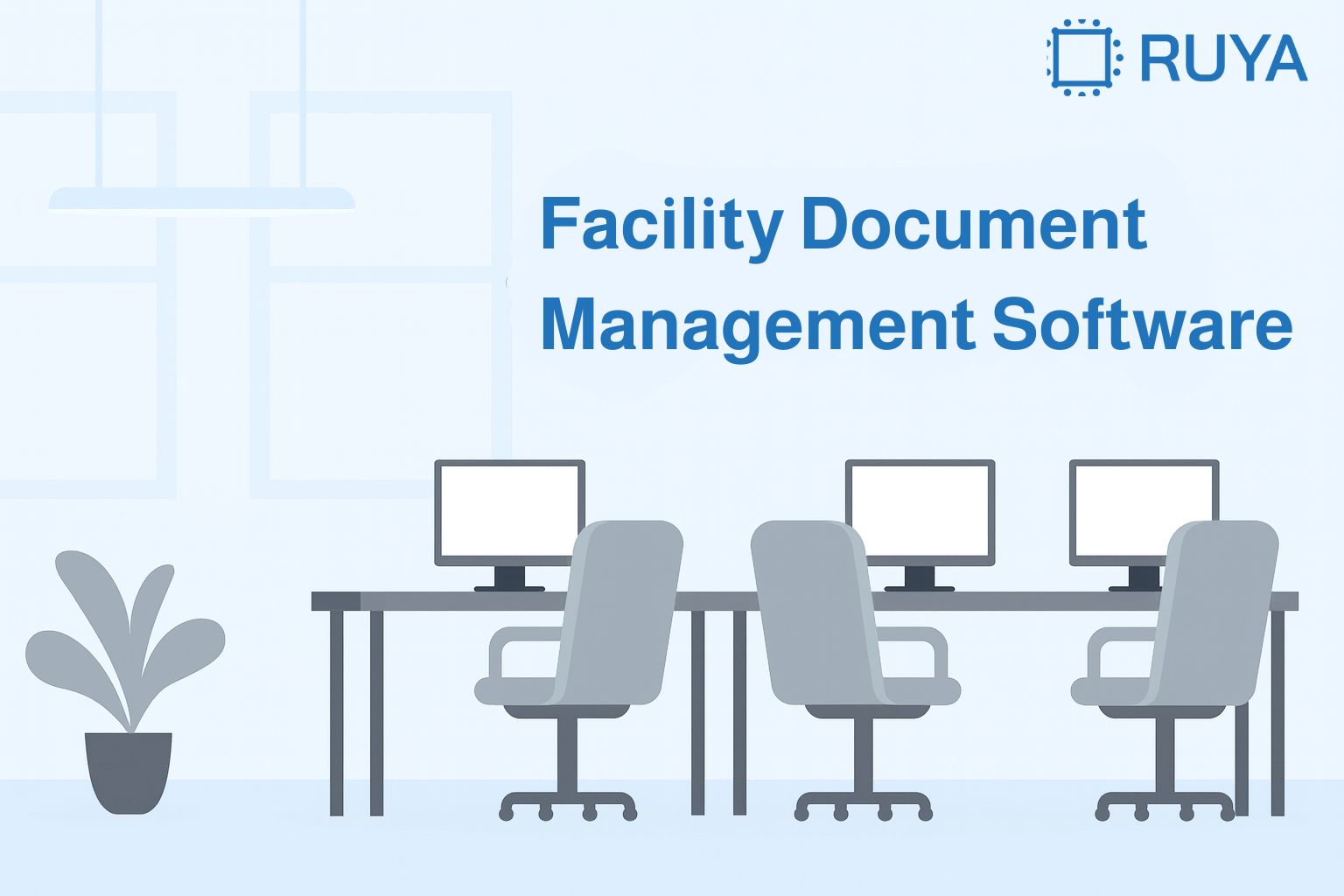We Review 5 Best Healthcare Compliance Software Solutions

Quick Summary
This guide reviews five of the best healthcare compliance software tools for hospitals that want to reduce risk, improve inspections, and stay audit-ready. We cover tools that help large systems manage regulations, assets, and facility data more efficiently so teams can stay compliant with ease. Compare features, pricing, pros, and cons to find the right match for your hospital operations.
Looking for the Best Healthcare Compliance Software?
Healthcare compliance is complex and ever-changing. Regulations evolve, audits can pop up unexpectedly, and missing even a small detail could lead to costly penalties. For hospitals managing multiple sites and teams, staying compliant is a constant juggling act.
Outdated systems, manual tracking, and scattered data only add to the challenge. That’s where healthcare compliance software steps in. These tools are designed to standardize processes, minimize risk, and ensure you're always audit-ready.
In this Ruya article, we’ll explore the top 5 healthcare compliance software solutions built specifically for hospital systems. Whether you're looking to streamline your compliance processes or reduce the risk of costly mistakes, these tools will help you stay on track and meet your goals.
Why listen to us?
At Ruya, we understand the real challenges healthcare systems face. Our team has reviewed dozens of compliance software solutions with a focus on what truly matters: compliance tracking, mobile inspections, user support, and seamless integration.
With hands-on experience working with health systems managing over 200,000,000 sq ft of space across 100+ bed facilities, we’re deeply familiar with the needs of modern healthcare operations. Our insights come from real-world expertise, ensuring you get the most relevant and practical recommendations for your organization’s compliance goals.

What is healthcare compliance software?
Healthcare compliance software is designed to help hospitals and medical facilities navigate the complex and ever-changing landscape of regulatory standards. These tools centralize and automate essential tasks like tracking policies, scheduling inspections, managing certifications, and preparing for audits, all while ensuring compliance with federal and state regulations.
For example, healthcare compliance software can automate the tracking of staff certifications and training schedules, reducing the risk of non-compliance due to expired credentials. It can also simplify facility inspections by providing mobile access to checklists, allowing teams to perform real-time inspections, log findings, and immediately trigger maintenance tasks.
For large health systems managing multiple sites, teams, and diverse compliance codes, this software acts as a single source of truth, consolidating data to improve accuracy, simplify reporting, and ensure all teams are aligned and audit-ready at any time.
Why is healthcare compliance software important?
- Reduces risk of penalties: Automates inspections, alerts, and documentation to help hospitals stay audit-ready.
- Saves time on admin tasks: Cuts back on manual tracking and spreadsheet overload.
- Improves inspection accuracy: Ensures consistent processes with built-in code checklists and real-time reporting.
- Keeps teams aligned: Centralizes data so staff, vendors, and leadership work from the same source of truth.
- Supports large facility operations: Tools like Ruya make it easier to manage life safety plans, assets, and inspections across multi-site hospital systems without needing to rely on complex IT setups.
5 top healthcare compliance software tools
- Ruya
- Medxcel
- Accruent TMS
- ATG
- RLDatix
1. Ruya

Ruya is built specifically for hospital systems that manage large, complex facilities. It consolidates multiple compliance processes into one intuitive, mobile-first platform. From design and construction to day-to-day inspections, Ruya supports the full facility lifecycle.
Unlike generic compliance tools, Ruya is the answer to the operational challenges of healthcare. Whether you’re juggling different codes across buildings or preparing for audits, it helps teams stay aligned, efficient, and compliant.
With mobile access, floor plan syncing, and minimal IT dependency, Ruya gives hospital teams the tools they need without the tech bloat they don’t. It’s engineered to reduce administrative overhead and make staying compliant part of the daily workflow rather than a separate chore.
Key Features
- Mobile inspections with code checklists: Teams can conduct facility inspections directly from their phones, with built-in code references with fewer manual errors.
- Real-time floor plan syncing: Supports live updates to floor plans in formats like PDF, DWG, and Revit, ensuring everyone works from the most current data.
- Centralized vendor and asset directory: Organizes vendors and equipment by building, making it easier to manage compliance across multiple sites.

- Life safety plan collaboration: Stakeholders can review and update plans without needing to meet physically, which is ideal for emergency prep and remote work.

- Unified platform for full facility lifecycle: Covers compliance from design and construction to maintenance and inspections, all in one tool.
- Low IT overhead: Runs with minimal infrastructure needs, easing deployment across multiple hospital locations.
- Organized digital recordkeeping: Automatically logs inspection reports, vendor activity, and plan updates for easier audit readiness.
Pricing
We offer custom pricing based on your facility size and requirements. Contact us for a tailored quote.
Pros
- Built specifically for hospitals and healthcare systems
- Real-time update capabilities for field teams
- Mobile-first and user-friendly
- Scales across large portfolios
- Reduces operational friction and IT reliance
Cons
- Not suited for small clinics or single-location facilities
2. Medxcel

Medxcel is a leading healthcare facilities management platform known for its compliance-driven services. It helps hospitals and health systems stay ahead of regulations by combining facility management expertise with digital tools. The platform can serve large, complex organizations needing robust oversight and streamlined processes.
Medxcel goes beyond basic compliance tracking by integrating an environment of care, life safety, and emergency management planning. It is a mix of on-site support and cloud-based technology so hospitals can maintain compliance while improving operational efficiency. The platform also offers consulting services to help healthcare organizations meet accreditation standards.
Key Features
- Environment of care management: Tracks safety, quality, and compliance issues across hospital environments.
- Life safety code support: Ensures facilities meet stringent fire, safety, and building codes.
- Emergency management planning: Prepares hospitals for disaster recovery and compliance with emergency protocols.
- Cloud-based compliance tools: Centralises reporting, inspections, and maintenance records for quick access during audits.
- On-site expertise: Offers direct facility management support and consulting services.
Pros
- Combines software with hands-on consulting and facility services
- Strong life safety and emergency planning tools
- Cloud-based reporting improves audit readiness
Cons
- Service-heavy model may not fit teams seeking software-only solutions
- Limited flexibility for hospitals that prefer managing compliance fully in-house
3. Accruent TMS

Accruent has a suite of facility and asset management tools built for large healthcare providers. Its compliance solutions are part of a broader ecosystem to help hospitals manage maintenance, work orders, and regulatory requirements in one platform.
Accruent is known for its enterprise-level scalability and strong integration capabilities. It works well for multi-site hospital systems that need visibility across assets, service histories, and code compliance. The platform also helps teams standardise documentation and keep reporting processes automated for audits and accreditation.
While Accruent isn’t exclusively focused on healthcare, its HFM (Healthcare Facilities Management) solutions are widely used in the industry, making it a strong contender for hospitals seeking an all-in-one approach.
Key Features
- Work order and maintenance tracking: Organises preventive and corrective maintenance tasks across facilities.
- Regulatory compliance automation: Supports TJC, CMS, and other healthcare compliance standards with built-in reporting tools.
- Asset lifecycle management: Tracks assets from acquisition to retirement, with service history and condition data.
- Mobile accessibility: Allows field teams to complete tasks and inspections on the go.
- Data integration options: Connects with existing systems like CMMS, EHRs, and IoT devices.
Pros
- Scales well for large hospital networks
- Strong integration with enterprise systems
- Automates complex reporting and audit prep
Cons
- Requires training to fully leverage all modules
- Not healthcare-exclusive, so some tools may feel generalized
4. ATG by JLL

Acquired by JLL, ATG delivers facility compliance and asset data solutions for healthcare. It focuses on helping hospitals maintain accurate records, meet regulatory requirements, and prepare for inspections through structured data management. The tool is best known for its expertise in facility documentation, life safety drawings, and asset validation.
What sets ATG apart is its deep support for hospital compliance workflows when it comes to ensuring documentation, as it aligns with Joint Commission and CMS standards. Hospitals with aging infrastructure or scattered documentation often use ATG to centralize, digitize, and clean up their facility records.
Backed by JLL’s broader facility services, ATG is often used as part of a larger facility management program. This makes it a good choice for systems already working with JLL.
Key Features
- Facility compliance documentation: Maintains clean, current records for audits and inspections.
- Life safety drawing support: Ensures all facility maps meet code and inspection standards.
- Asset inventory and validation: Verifies and organizes key asset data for compliance readiness.
- Custom facility reporting: Builds tailored reports for regulatory bodies and accreditation reviews.
- Integration with JLL services: Works well alongside JLL’s facility and real estate management solutions.
Pros
- Strong support for documentation-heavy compliance tasks
- Useful for organizing older or inconsistent facility data
- Backed by a large, experienced facility management firm
Cons
- Tied closely to JLL services, which may limit flexibility
- Less suitable for teams seeking standalone, software-only tools
5. RLDatix

RLDatix is a global leader in healthcare risk and compliance management, trusted by hospitals seeking end-to-end risk reduction and regulatory oversight. The platform combines compliance tracking, incident reporting, audit prep, and safety intelligence to help systems respond to risk exposures.
Built with input from healthcare professionals, RLDatix aligns closely with Joint Commission, CMS, and OSHA requirements. The experience emphasizes reducing patient safety incidents by integrating compliance with clinical risk and operational performance. With strong scalability, it's well-suited for multi-site organizations.
RLDatix extends beyond basic compliance as it connects operational data, incident reports, and inspection records into a unified system. The platform helps hospitals identify patterns and take action before regulatory issues escalate.
Key Features
- Integrated risk and incident reporting: Captures safety events and ties them to corrective actions and compliance workflows
- Audit and regulatory compliance tracking: Automates workflows to monitor adherence to Joint Commission, CMS, OSHA, and other standards
- Safety intelligence dashboard: Provides analytics and trend identification for proactive risk mitigation
- Policy and procedure management: Ensures documentation is current, version-controlled, and accessible to relevant staff
- Unified data across compliance functions: Links incident data, inspections, corrective actions, and compliance records into one hub
Pros
- Combines clinical risk, safety, and compliance in one platform
- Robust analytics and reporting to anticipate trends
- Mobile reporting accelerates response times
- Policy version control keeps documentation current
Cons
- Broad focus on risk may overwhelm hospitals seeking simple compliance tools
- Its complex feature set may require training to ensure full adoption and value
Factors to consider when choosing healthcare compliance software
1. Scalability
Large hospital systems manage thousands of assets across multiple campuses. A tool for small facilities won’t meet those demands. For example, Ruya supports systems with more than 2,000,000 sq ft, showing it can scale alongside complex operations. This ensures the software grows with your facility, not against it.
2. Ease of use
A tool may have powerful features, but if staff can’t use it easily, adoption will suffer. We’ve seen that platforms with simple interfaces and mobile access are more likely to be used consistently in the field. This helps teams complete inspections and track compliance without delays or workarounds.
3. Integration with existing systems
Disconnected tools create extra admin work and risk data loss. Choose software that integrates with CMMS platforms, asset directories, and document storage systems to ensure smooth workflows.
4. Accurate reporting and documentation
The best platforms help teams keep floor plans, inspection records, and compliance documentation accurate and up to date, ready for audits at any time.
5. Vendor support and flexibility
Look for vendors that offer hands-on onboarding, responsive support, and flexible pricing models based on facility size and complexity.
Choose the right healthcare compliance software today
With the right tool, you can save hundreds of admin hours, reduce risk exposure, and help hospital teams stay audit-ready without the spreadsheet chaos. For large systems managing multiple facilities, mobile access, scalable workflows, and strong inspection tools are more essential than optional.
Ruya was built specifically for hospital networks dealing with complex facility systems. It simplifies inspections, organizes assets, and keeps floor plans up to date. If your team is ready to replace outdated processes with something faster, clearer, and built for how healthcare teams actually work, it’s time to see Ruya in action.
Book a personalized demo today and find out how Ruya can help your organization stay ahead of inspections, audits, and facility compliance without the usual headaches.

.svg)


